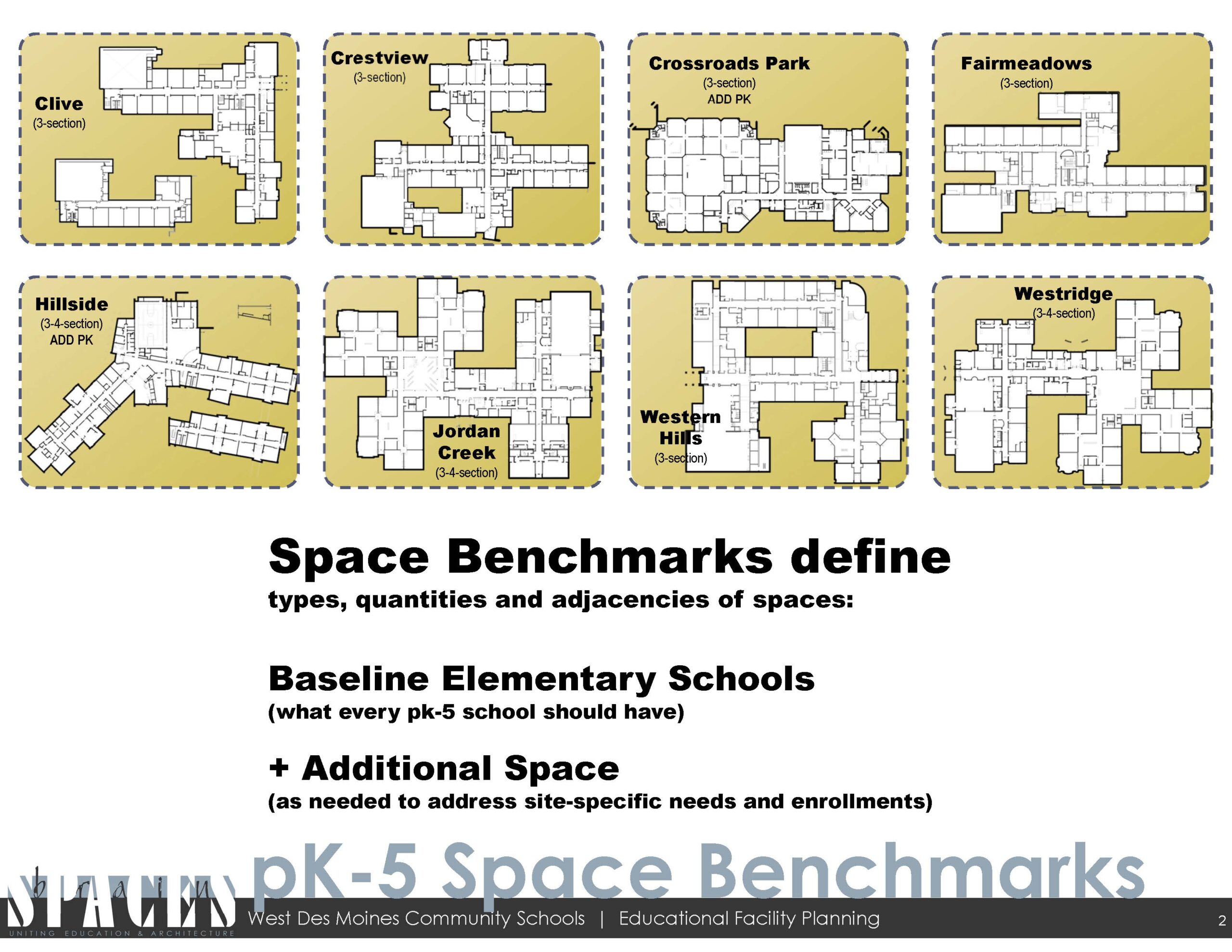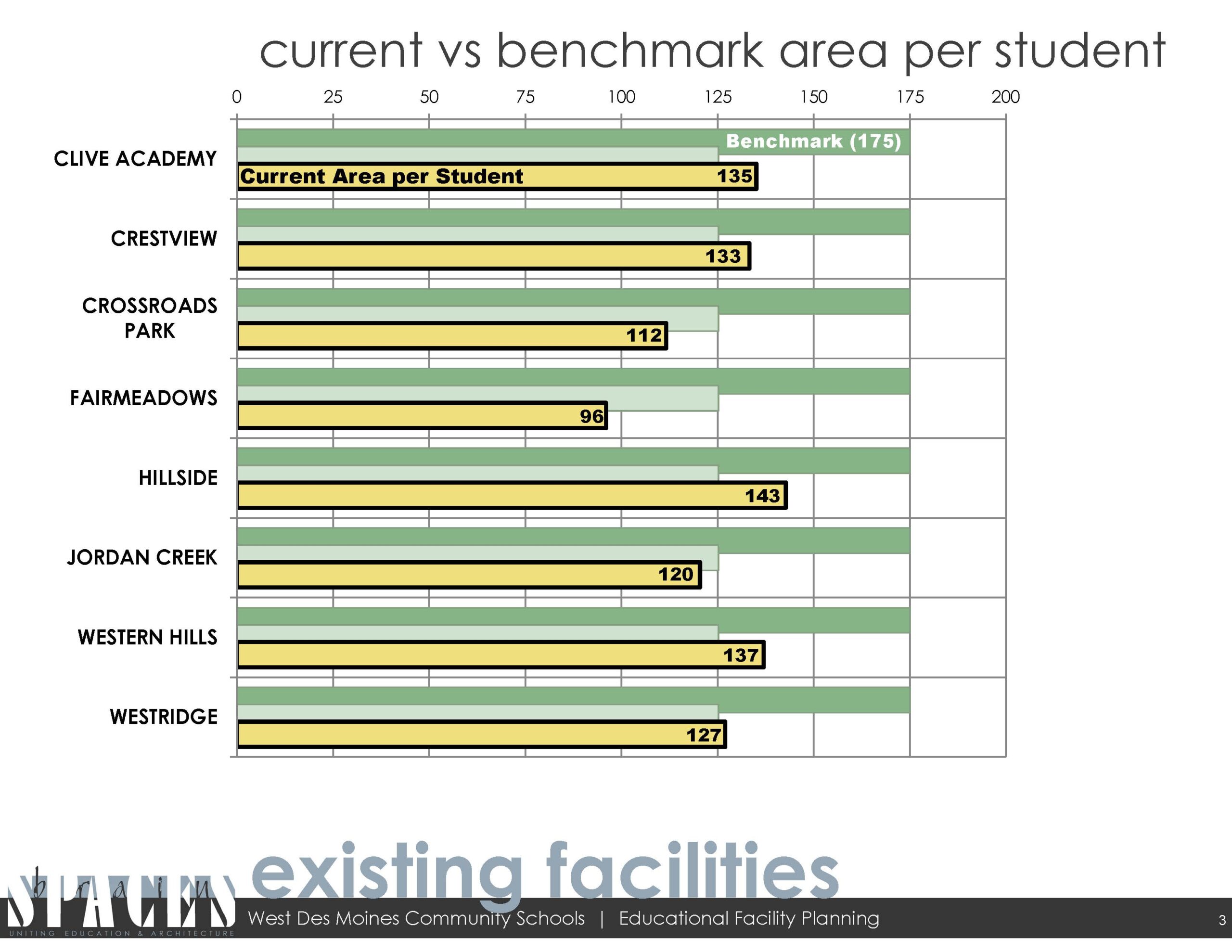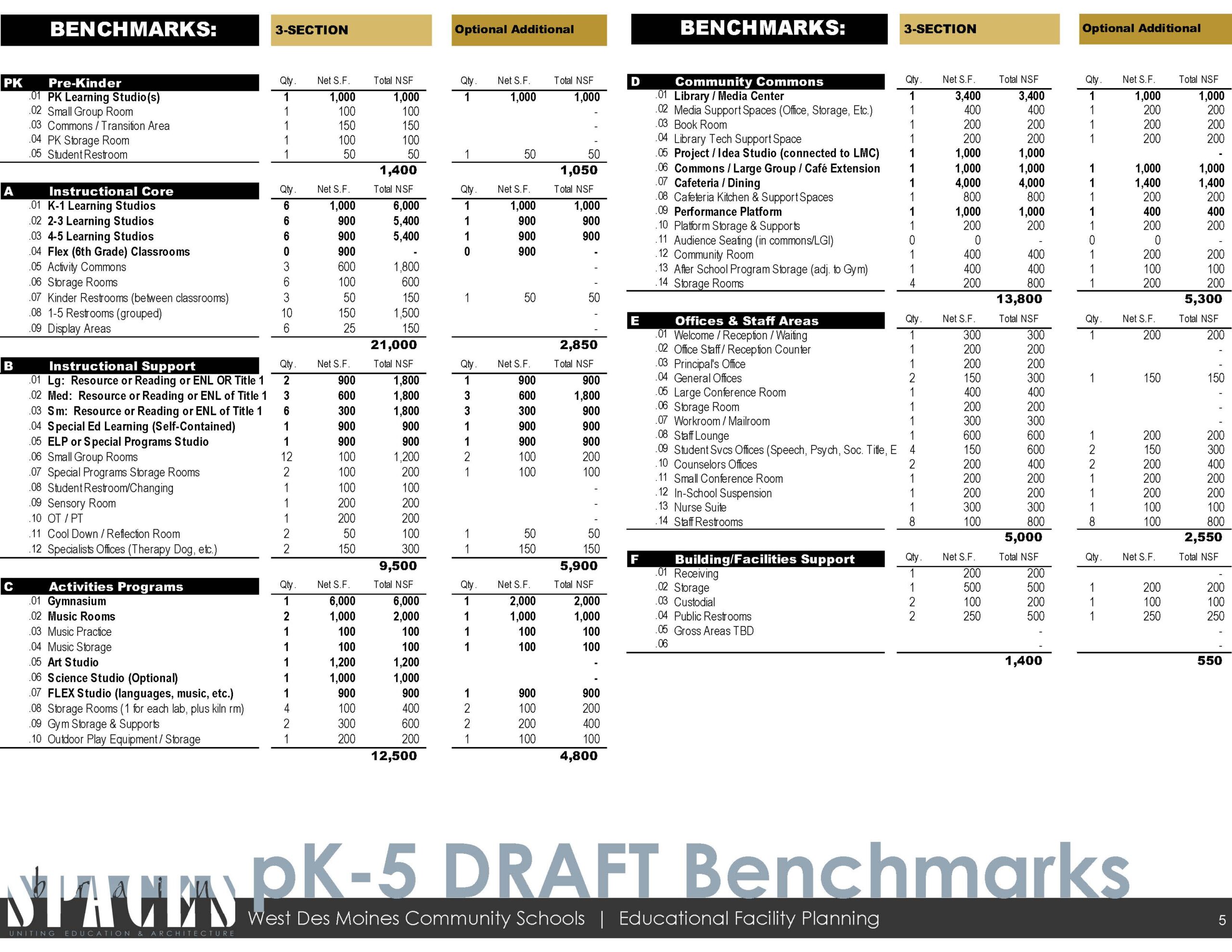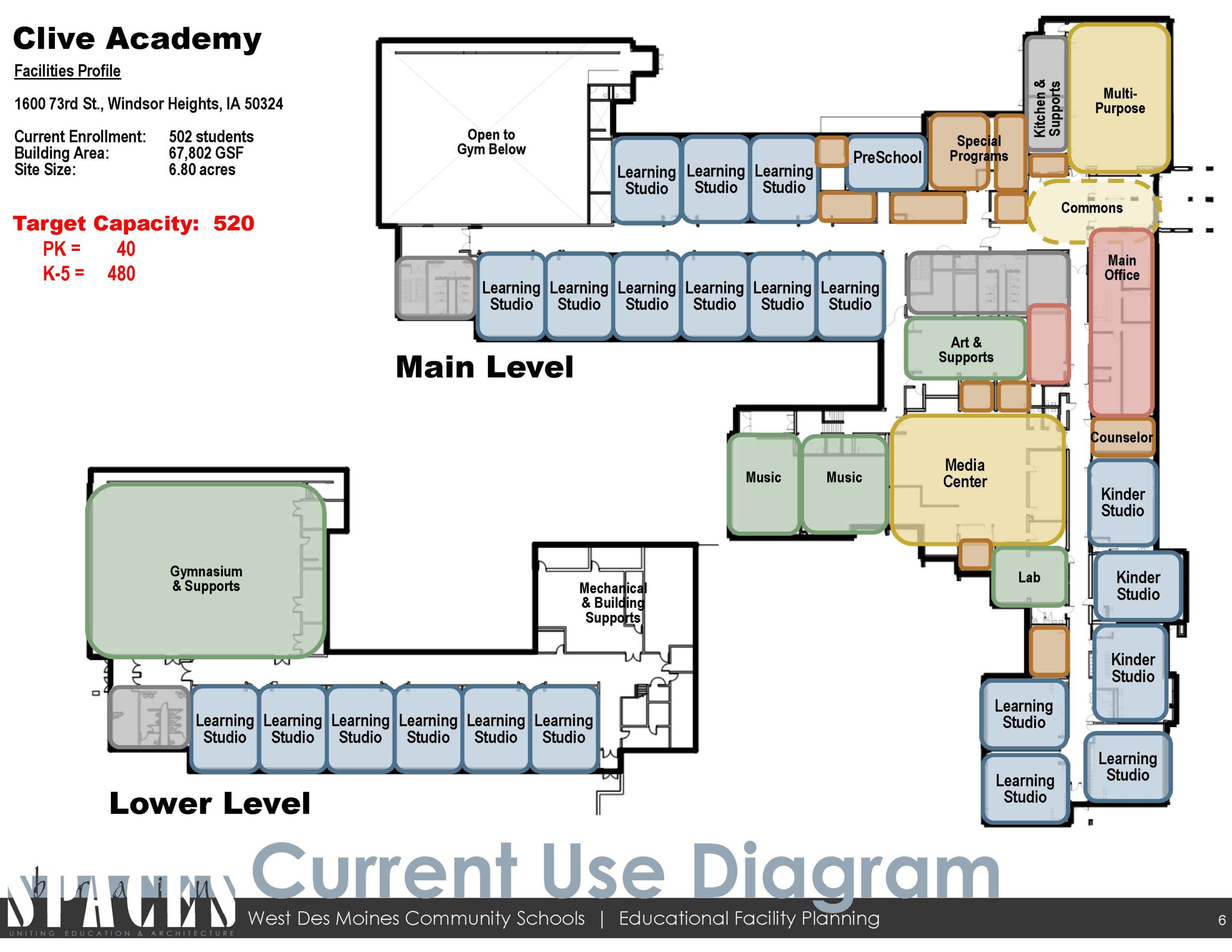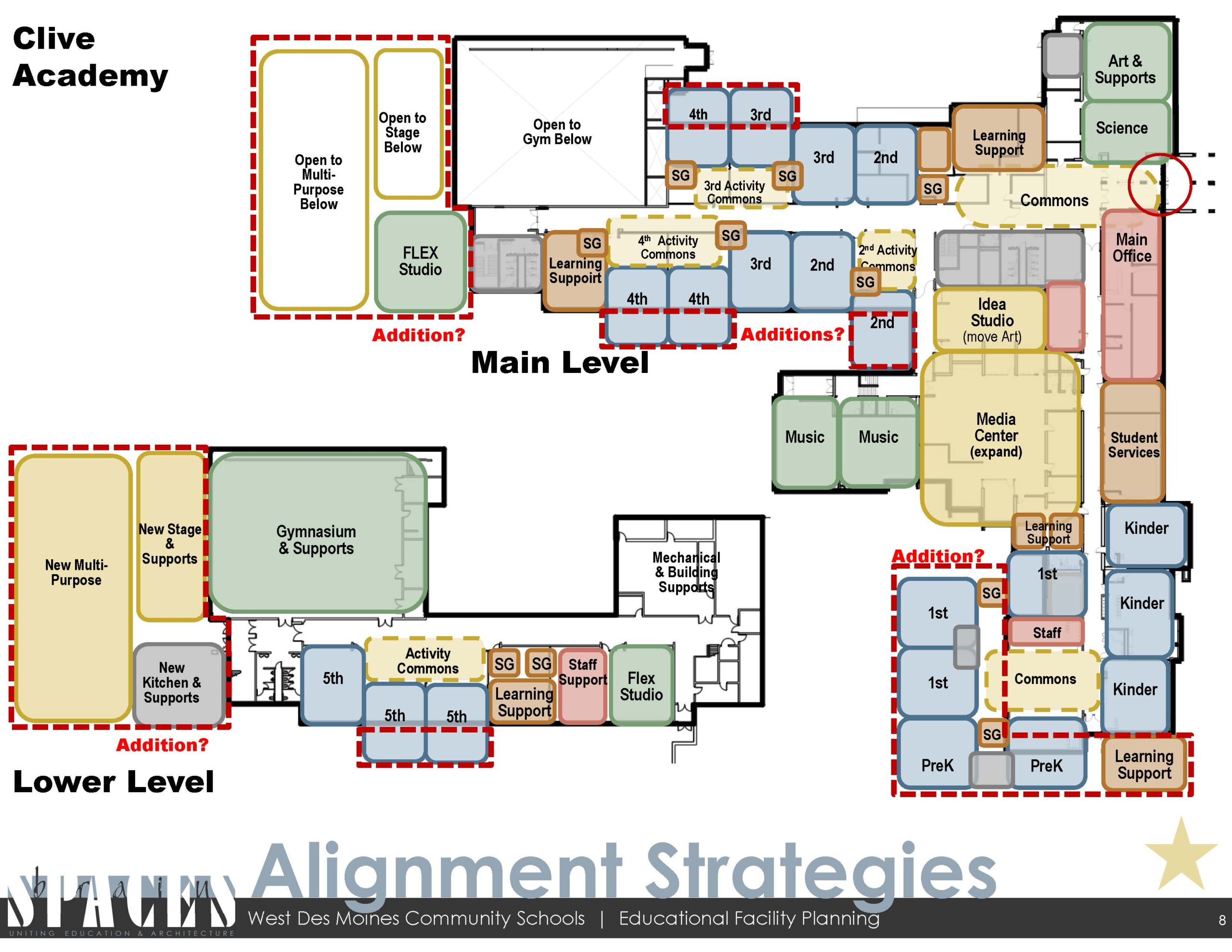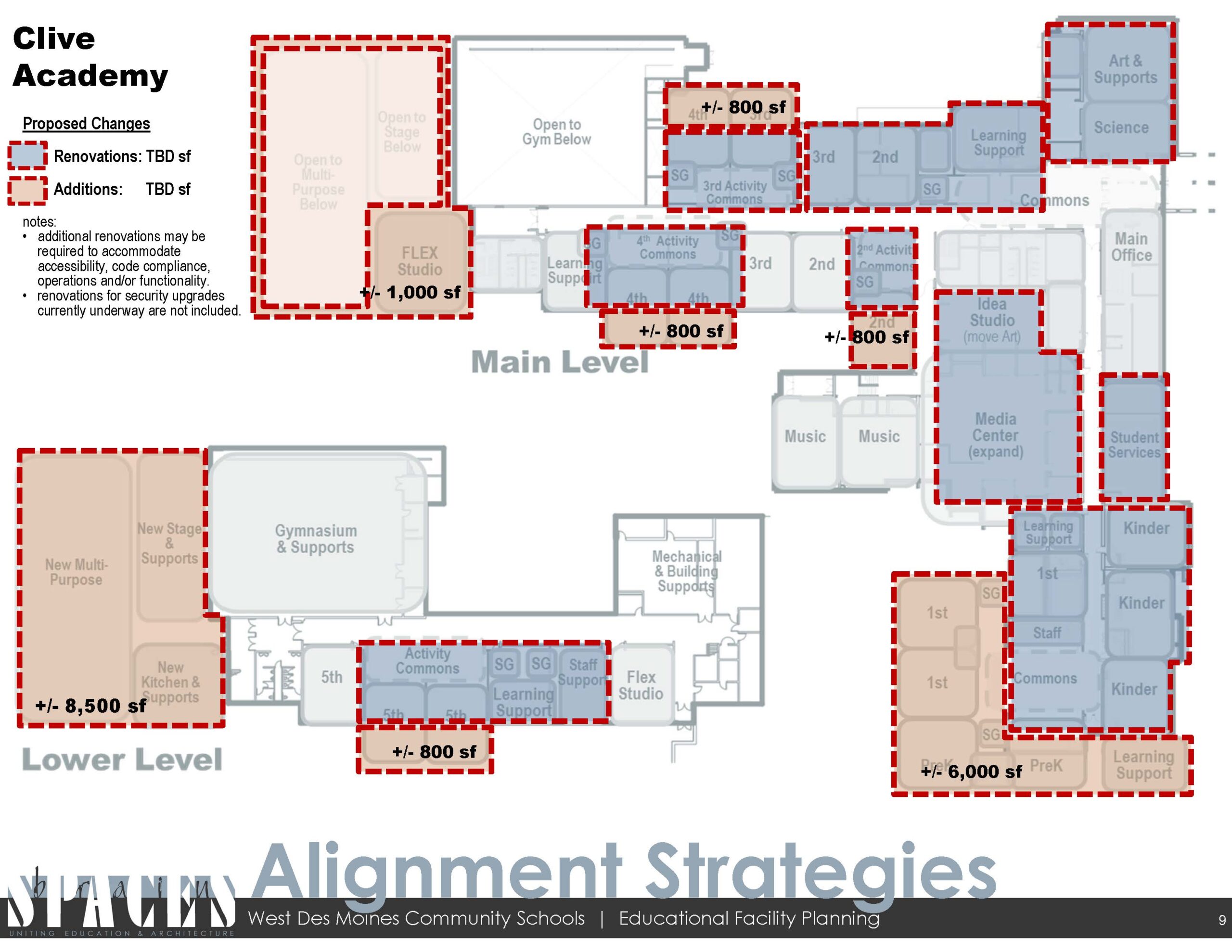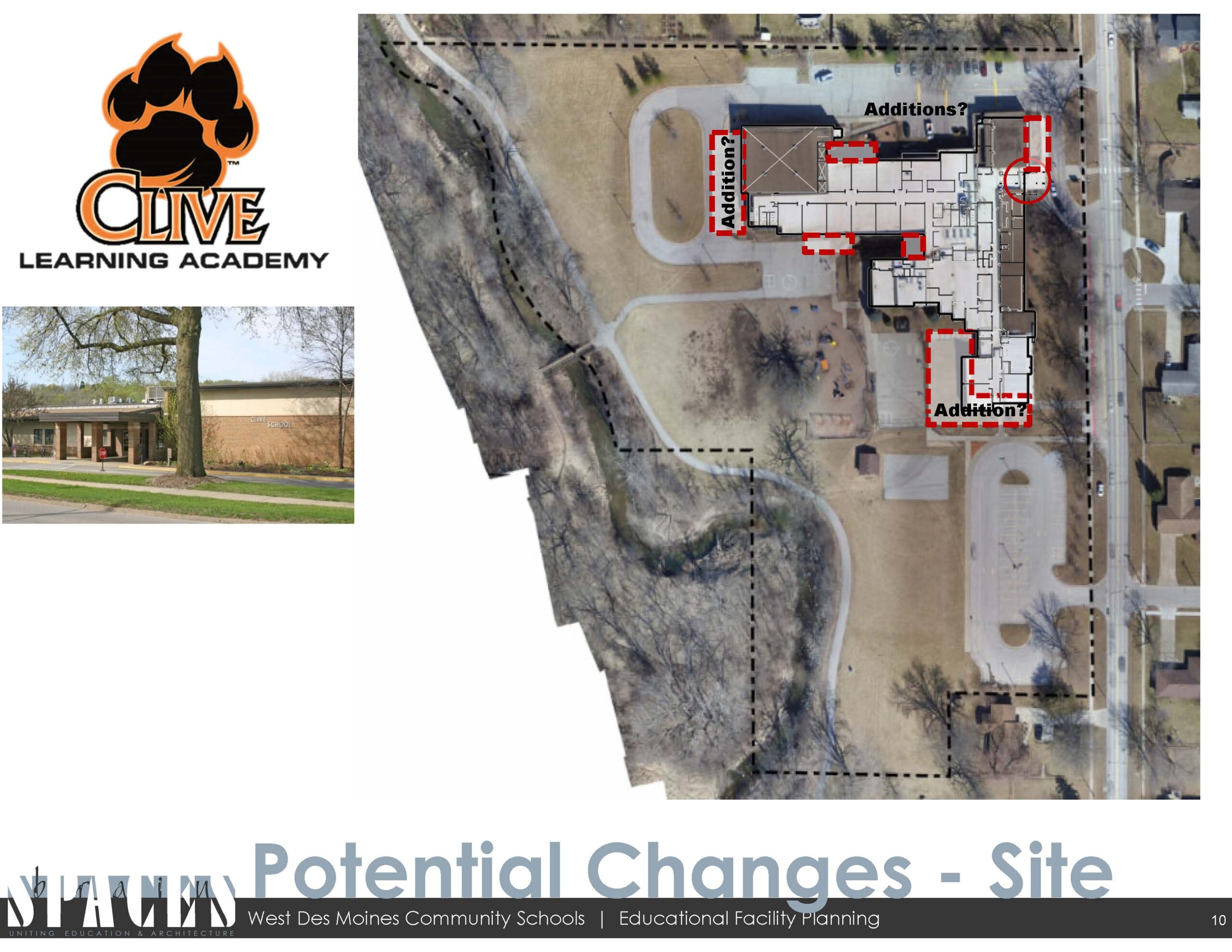The "Fit Analysis"
The process:
A fit analysis process may take many forms, depending on the context and conditions. Our team works with site-based staff and leadership to determine the components of the study which may include multiple factors in addition to facilities such as course offerings, class sizes, collaboration strategies, utilization and schedules, etc. In some cases the technical adequacy of the building and/or its systems is also considered.
We recommend that a fit analysis include not only what your school is currently doing, but also what it hopes to do in the future. This helps ensure your school is set to accommodate learners well into the future.
Examples of data to explore during a benchmarking / fit analysis effort include some or all of the following. Additional evaluation criteria is often uncovered during the process.
topic/parameter:
Average class sizes
Annual Calendar
Current Graduation rate
Demographic Information / Enrollment projections
Floor Plans & Site Plans
Bell Schedule
Target utilization rate (average % of periods each classroom is to be used. i.e. 6 of 8 periods = 80%)
Curricular program offerings (course listing)
Current master schedule (numbers of students per room, per course, per teacher, per period)
Staffing (teaching, operational, admin, specialty, etc.)
Special Needs program descriptions
Food services (number of lunches, type of kitchen, etc.)
Community use of facilities and site
Security practices (staffing, etc.)
Off-site learning strategies (partnerships, internships, college credits, etc.)
Student activities (clubs, yearbook, etc.)
Educational technology strategies
Sports and athletics listing
Site and parking needs
etc.
We also ask whether each parameter is a "given" or whether it is open for discussion and potential revision.
Benchmarking:
In order to determine what's missing, we must first determine what is needed. We call this activity "benchmarking". It sets a target against which we can evaluate the effectiveness of existing facilities. We must know what we're aiming for before we can determine how close we are to hitting the target.
The example below illustrates summary exbibits of benchmarking for district-wide elementary schools, a fit analysis for one school facility, plus ideas and strategies for modifying the facility to better support the defined benchmarks:
Alignment Strategies
The purpose of a fit analysis is to illustrate facilities or areas that require attention, possibly renovations, additions, or even new construction. An exploration of strategies to better align facilities with your vision, goals and facilities benchmarks may result in a spectrum of possible solutions. You can then select the solution that is the smartest and most feasible for your school.

